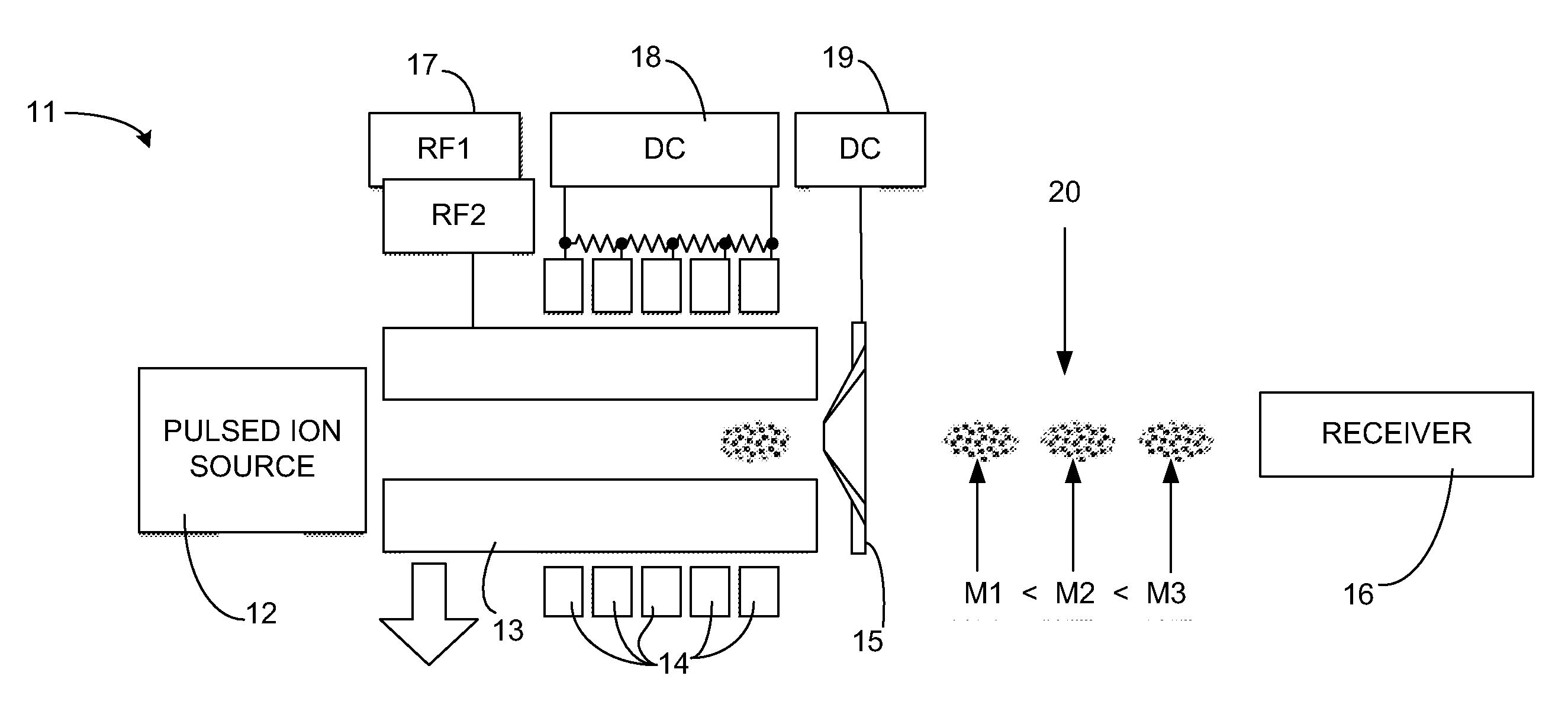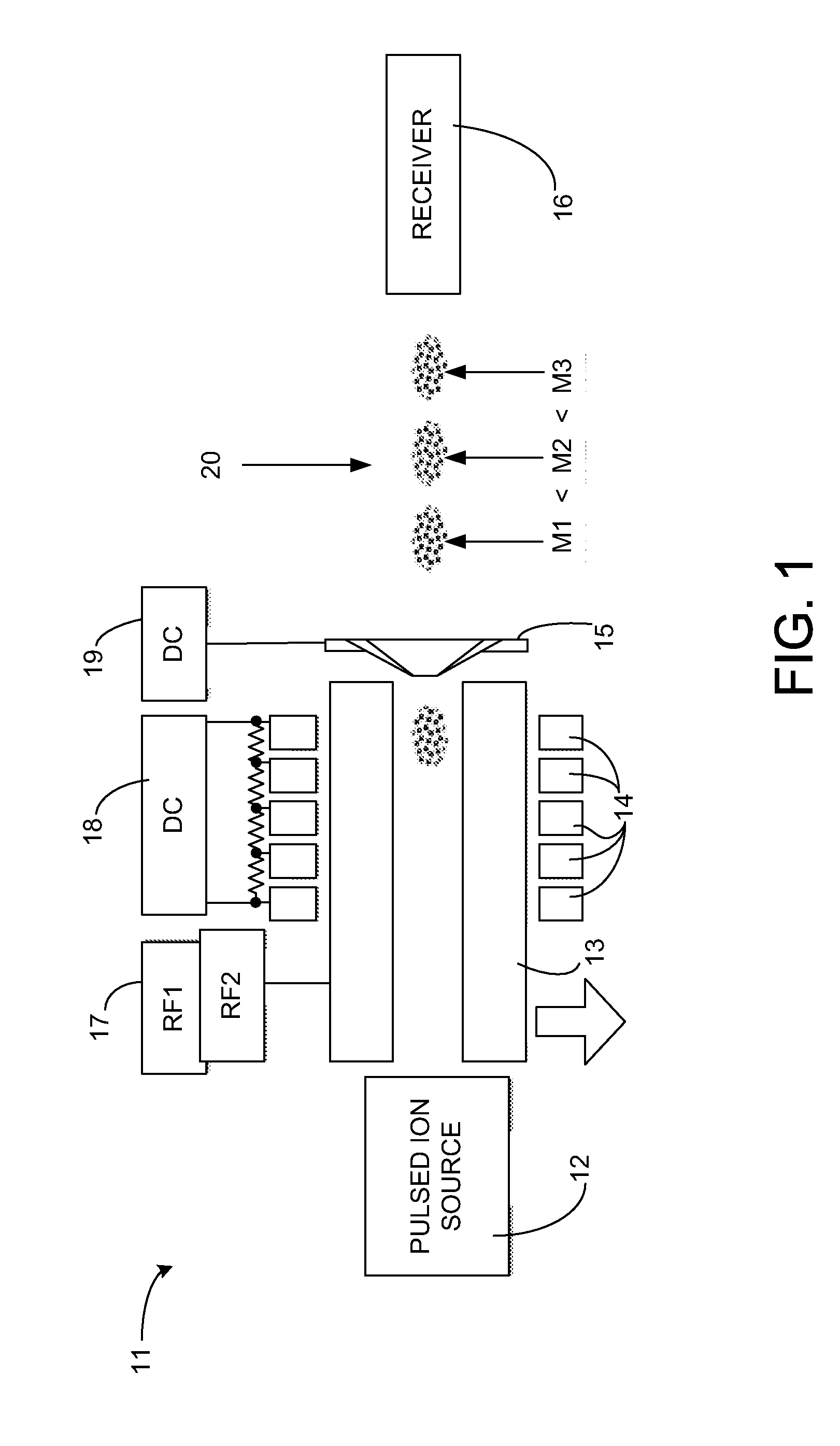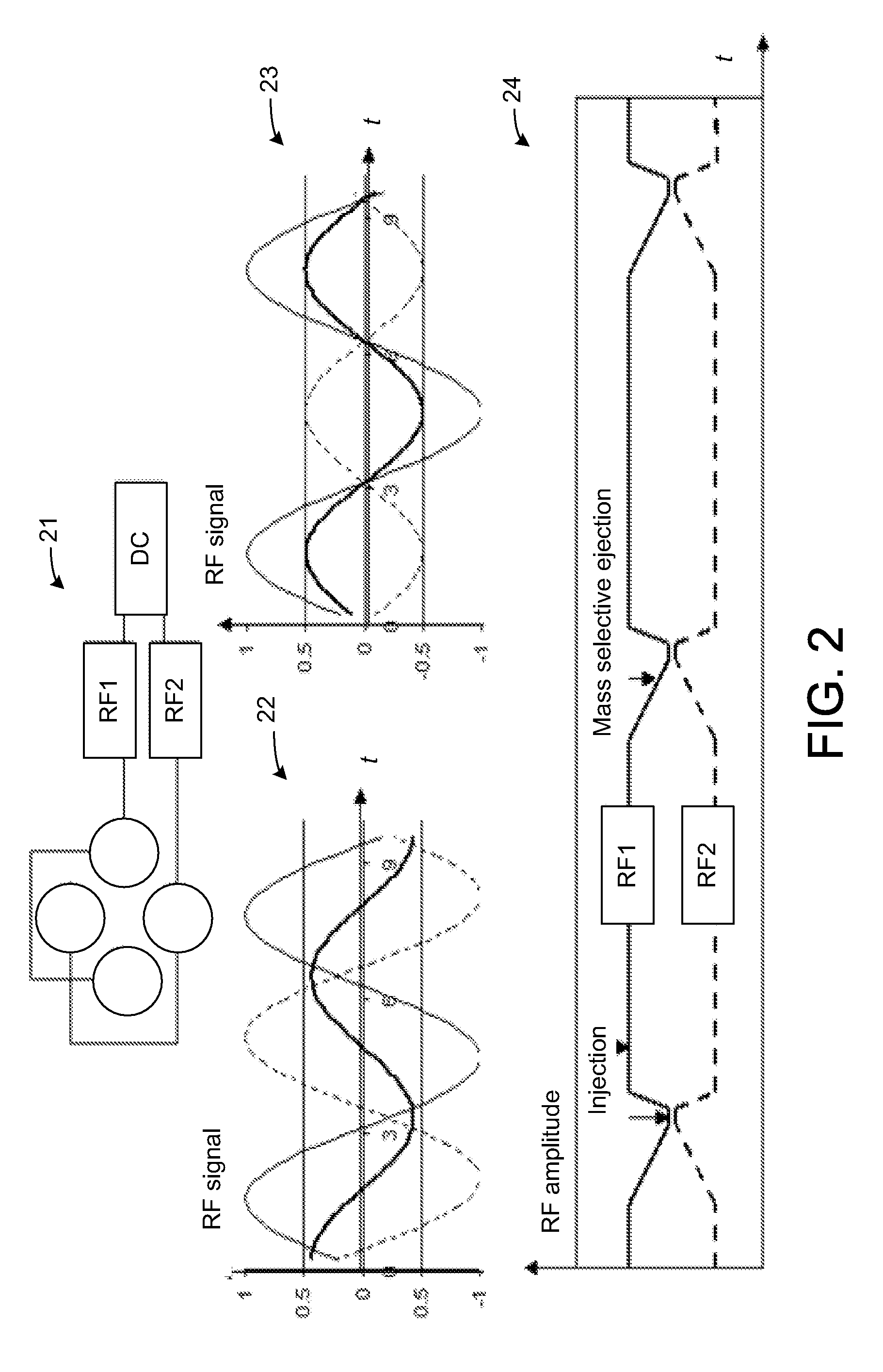Linear ion trap with an imbalanced radio frequency field
a radio frequency field and linear ion trap technology, applied in the field of mass spectroscopic analysis, can solve the problems of creating a mass dependent exit barrier and imbalanced multipole rf field, and achieve the effects of improving the duty cycle, fast scanning, and improving the duty cycl
- Summary
- Abstract
- Description
- Claims
- Application Information
AI Technical Summary
Benefits of technology
Problems solved by technology
Method used
Image
Examples
third embodiment
[0059] Yet another alternative method of scanning the value of m / z threshold is based on varying an extracting DC field. Such scanning is easier to implement compared to variation of the RF imbalance and is preferred in several examples (e.g., the third embodiment described below).
[0060] However, this alternative method causes a larger energy and angular spread of the extracted ion beam and is recommended for use in combination with a downstream dampening device.
[0061] Mass-selective sampling and the parameters of the ion beams are preferably improved by dampening the ions in gaseous collisions at gas pressure around 1-10 mtorr. Preferably, a weak DC gradient formed by auxiliary electrodes accelerates the ion ejection and improves the resolution of ion sampling. A radial resonance excitation of ions within the ion guide is expected to improve resolution of mass-selective sampling, though at the cost of additional excitation of ejected ions. Then, the ion trap can be considered for ...
second embodiment
[0064] According to the invention, the linear ion trap with an imbalanced RF field serves as a mass-selective ion source for a TOF MS with an orthogonal ion injection in order to improve the duty cycle of the TOF MS.
[0065] Referring to FIG. 3, the second embodiment 31 of the linear ion trap with an imbalanced RF field for a TOF MS with an improved orthogonal ion injection comprises the sequentially interconnected elements—an Electrospray ESI ion source 32 (as an example); an intermediate ion guide 33; a mass-selective ion guide 35 surrounded by a set of auxiliary electrodes 36 and by apertures 34 and 37 with an exit aperture 37 preferably having a cone shape; a set of ion lenses 38; and an orthogonal accelerator 39 in front of a TOF MS 40.
[0066] The elements of the TOF MS 31 are differentially pumped (shown by arrows). FIG. 3 shows only the relevant voltage supplies. The intermediate ion guide 33 is connected to a radio frequency supply 41 (RFO) with symmetric RF phases and a built...
fourth embodiment
[0084] According to the invention, the mass-selective ion trap with RF imbalance is used for mass separation in tandem mass spectrometers with a so-called parallel MS-MS analysis, i.e., acquisition of multiple non-redundant fragment spectra of different parent ions during a single mass-selective scan of the ion trap with mass-selective ion sampling (i.e., without rejecting parent ions).
[0085] A mixture of primary ions becomes separated in the mass-selective ion trap and fragment spectra are acquired for all parent ions without discarding any of the parent or fragment ions in mass-dependent scans. The resolution of mass-selective sampling could be improved by resonance excitation of the radial secular motion. Highly selective radial excitation couples to axial energy and helps ions to pass above the exit RF barrier. Though mass resolving power of the mass-selective ion trap with RF imbalance is moderate, the capability of rapid and parallel MS-MS analysis in the ion trap-TOF may beco...
PUM
 Login to View More
Login to View More Abstract
Description
Claims
Application Information
 Login to View More
Login to View More - R&D
- Intellectual Property
- Life Sciences
- Materials
- Tech Scout
- Unparalleled Data Quality
- Higher Quality Content
- 60% Fewer Hallucinations
Browse by: Latest US Patents, China's latest patents, Technical Efficacy Thesaurus, Application Domain, Technology Topic, Popular Technical Reports.
© 2025 PatSnap. All rights reserved.Legal|Privacy policy|Modern Slavery Act Transparency Statement|Sitemap|About US| Contact US: help@patsnap.com



